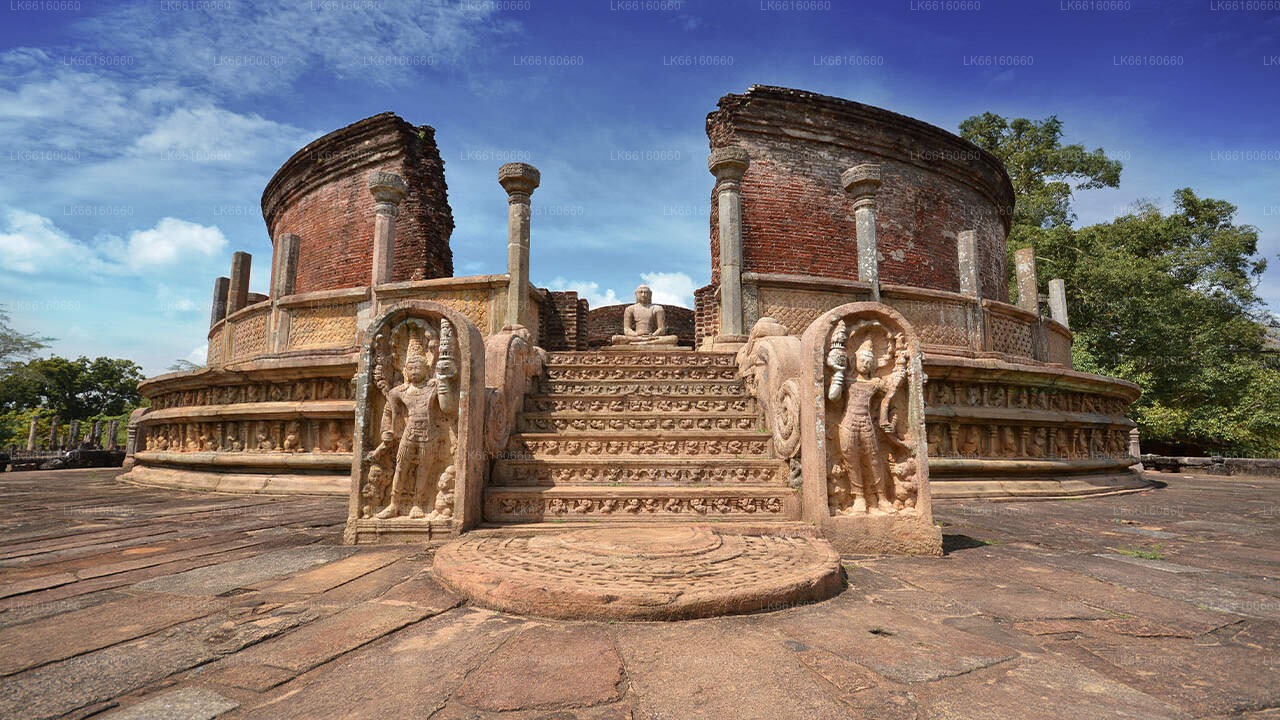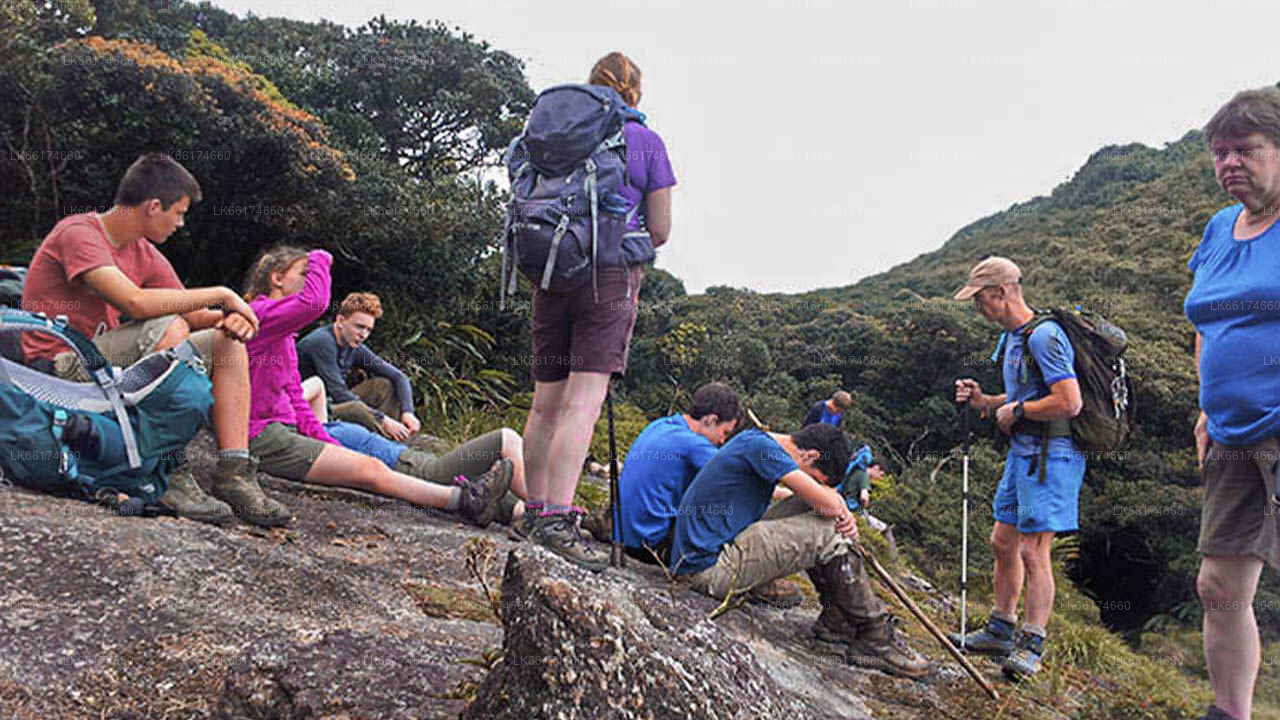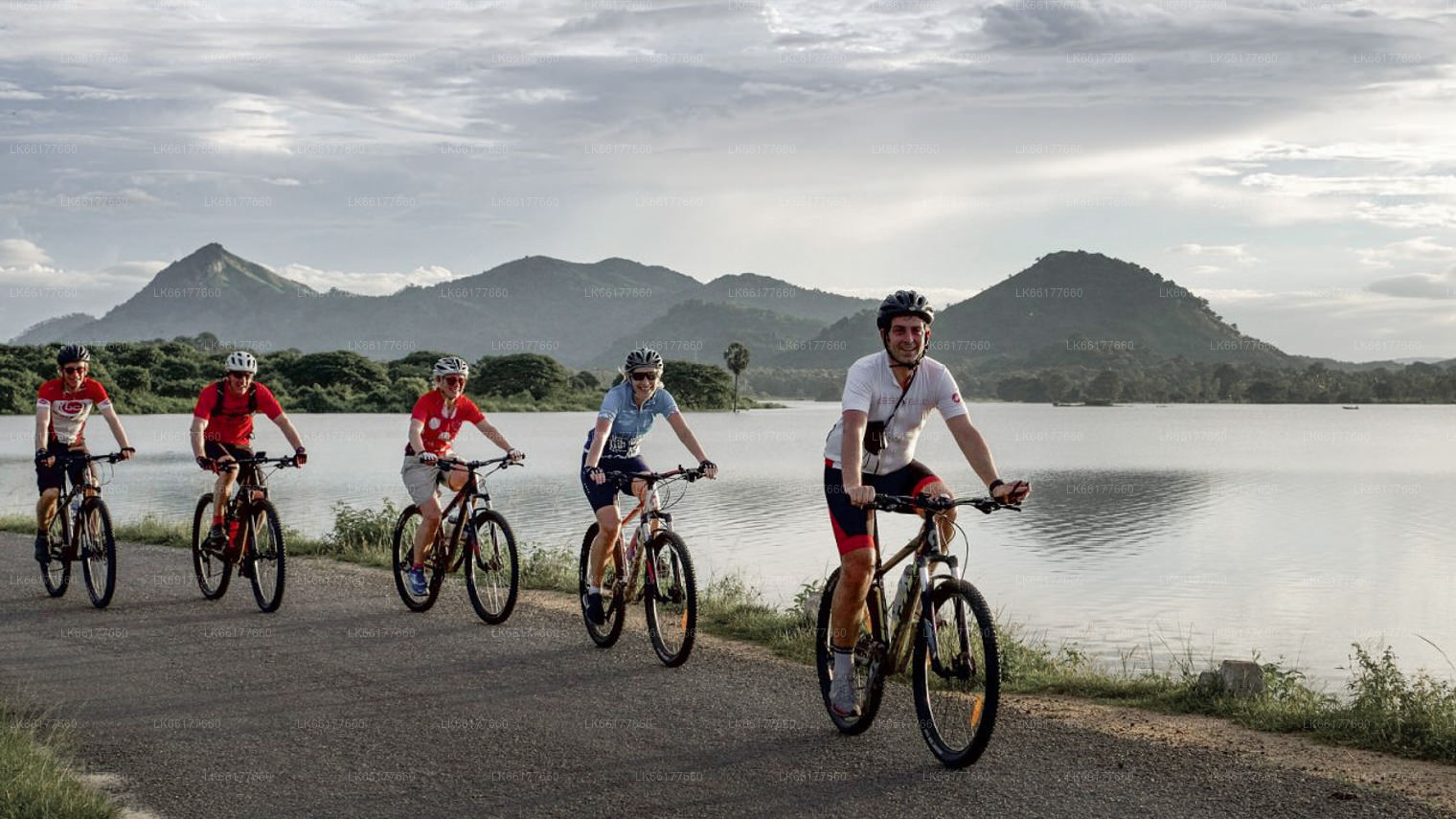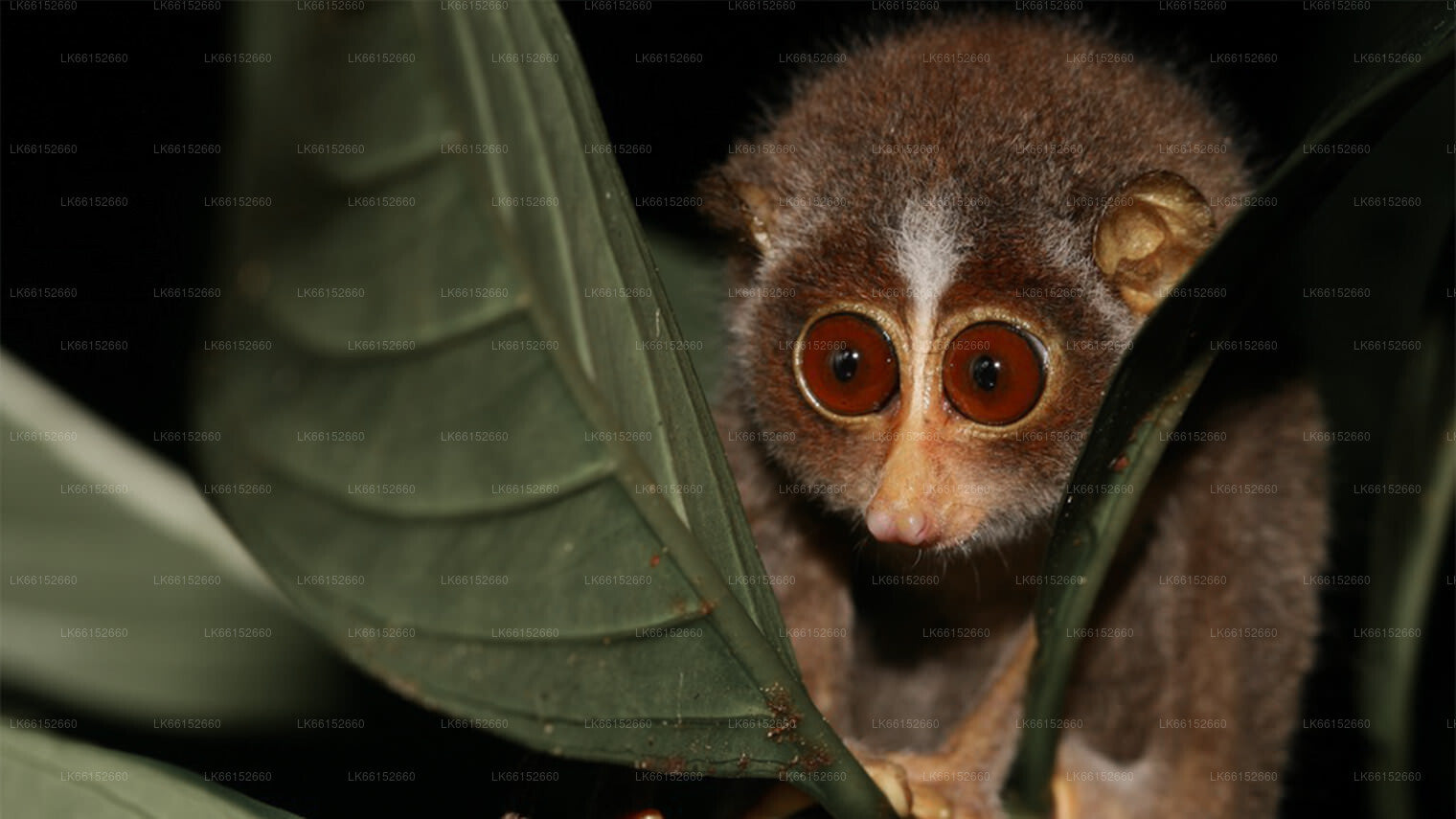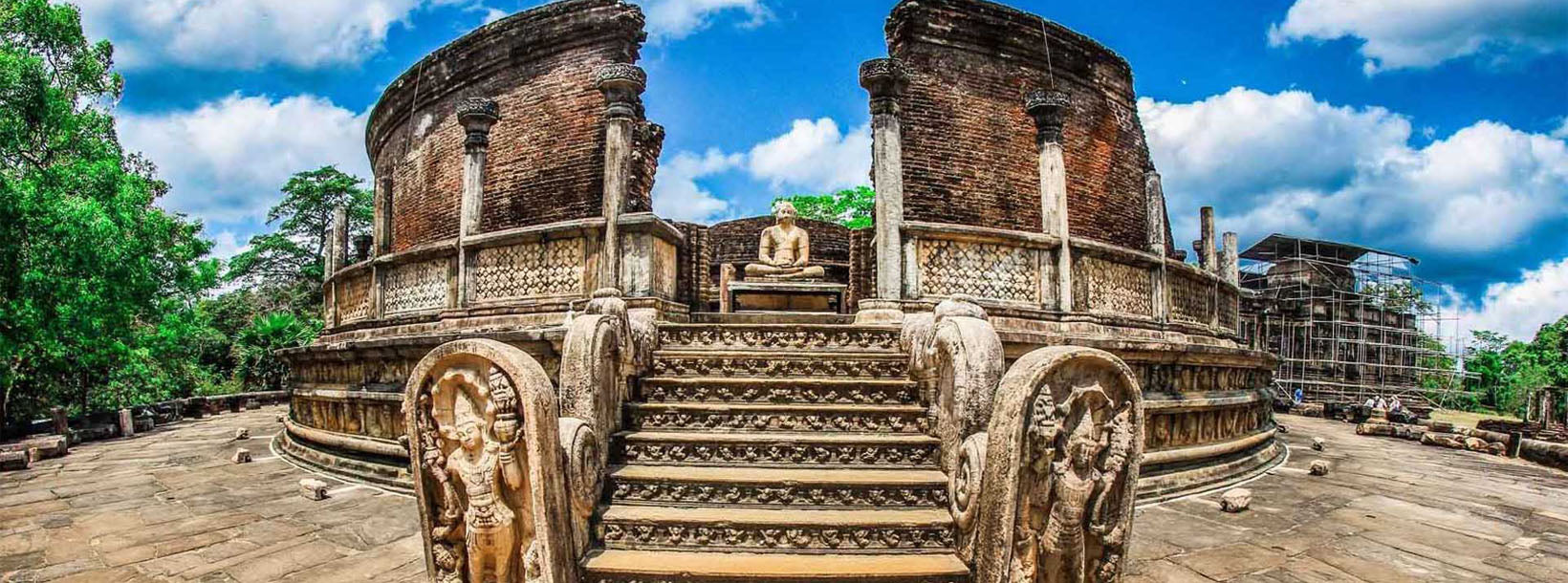
Ciudad de Polonnaruwa
Polonnaruwa, declarada Patrimonio de la Humanidad por la UNESCO en Sri Lanka, fue la capital medieval del país (siglos XI-XIII). Famosa por sus ruinas bien conservadas, incluyendo las icónicas estatuas de Gal Vihara, exhibe una arquitectura impresionante que refleja la grandeza de la antigua civilización cingalesa.
Rankoth Vehera
Rankoth Vehera is a large ancient stupa located in the historic city of Polonnaruwa, Sri Lanka. Built by King Nissanka Malla between 1187 and 1196, it is one of the most significant Buddhist monuments in the Polonnaruwa period. Its name means “Stupa with the Golden Pinnacle,” reflecting its historical original design and spiritual importance.
The stupa is constructed entirely of brick and originally had a much greater height than it does today. Its base has a circumference of approximately 550 feet and it stands about 108 feet tall in its present state. Rankoth Vehera includes four large vahalkadas (ornate ritual platforms) aligned with the cardinal directions and sits on a large square terrace.
Visitors to Rankoth Vehera can walk along the terrace entrances, observe the brick craftsmanship and architectural style, and reflect on the stupa’s resemblance to Ruwanwelisaya in Anuradhapura. The site encourages quiet contemplation and offers views of the archaeological surroundings in Polonnaruwa. Guided tours are often available, explaining its history, inscriptions, and religious function.
Accessible year-round, the best time to visit Rankoth Vehera is during the dry season when paths are firm and visibility is clear. It is situated in the Polonnaruwa Ancient City, which is well connected by road and public transport. Entry to the archaeological park where Rankoth Vehera is located usually involves an admission fee and opening hours during daylight.
Acerca del distrito de Polonnaruwa
Polonnaruwa es la segunda ciudad más grande de la provincia centro-norte de Sri Lanka. La antigua ciudad de Polonnaruwa ha sido declarada Patrimonio de la Humanidad por la UNESCO. Polonnaruwa cuenta con una larga historia de conquista y lucha, y con razón constituye el tercer elemento del Triángulo Cultural. Ubicada a unos 140 km al noreste de Kandy, Polonnaruwa ofrece horas de inagotable placer para los amantes de la historia y la cultura, gracias a sus numerosos lugares de interés.
Gran parte de las ruinas que aún se conservan se atribuyen al rey Parakrama Bahu I, quien invirtió importantes recursos reales en la planificación urbana, incluyendo parques, edificios, sistemas de riego, etc. Su reinado se considera una época dorada, donde el reino prosperó bajo un gobernante visionario. El Parakrama Samudra es un tanque gigantesco que lleva el nombre de su patrón. El popular Palacio Real del rey, la Sala de Audiencias, rodeada de elefantes de piedra bellamente tallados, y la Piscina de Baño reflejan la superior capacidad de ingeniería de la época.
Acerca de la Provincia Central del Norte
La Provincia Central del Norte, la más grande del país, abarca el 16% de la superficie total del país. Está compuesta por dos distritos: Polonnaruwa y Anuradhapure. Anuradhapura es el distrito más grande de Sri Lanka, con una superficie de 7128 km².
North Central Province has numerous potentials for Investors to start their Businesses, especially Agriculture, agro based industries and Livestock sectors. More than 65% of North Central Province's people depend on basic Agriculture and agro base industries. NCP also called "Wew Bendi Rajje" because there are more than 3,000 medium and large scale tanks situated in the province. Sri maha bodiya, Ruwanweli seya, Thuparama dageba, Abayagiri Monastry, Polonnaruwa Rankot wehera, Lankathilake are scared









